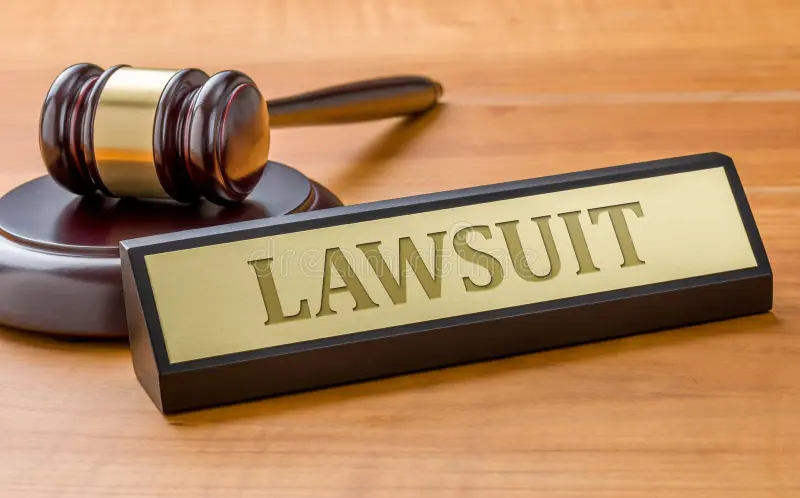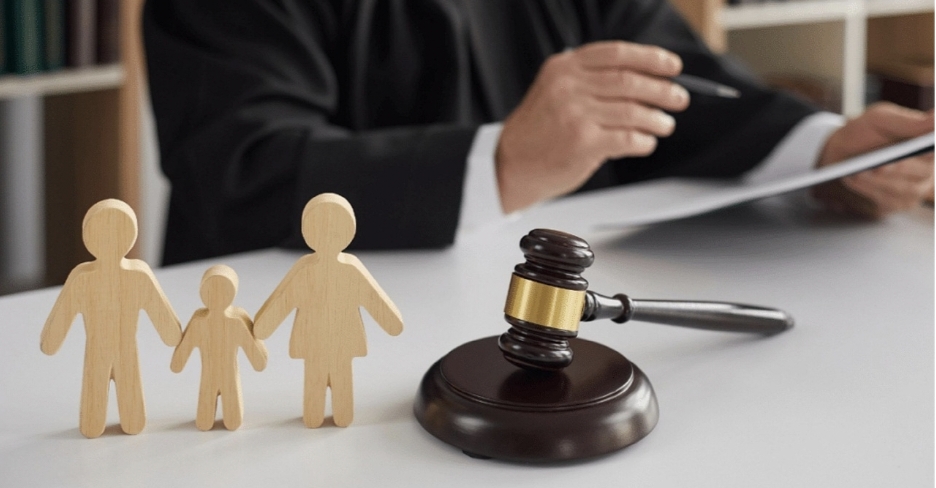Introduction: Understanding the Great Western Buildings Lawsuit
In the ever-evolving landscape of architectural preservation and urban development, certain legal battles emerge as touchstones, encapsulating the intricate dance between the past and the future. One such saga that has stirred both the legal and cultural spheres is the Great Western Buildings Lawsuit. This legal showdown raises profound questions about the value of heritage in a rapidly changing world and serves as a microcosm of the perennial struggle between progress and preservation.
Background of Great Western Buildings
At the heart of this legal maelstrom stand the Great Western Buildings, steadfast witnesses to the passage of time. With a history etched in their bricks and mortar, these edifices are not just architectural entities but living testaments to a bygone era. Their ornate facades and intricate craftsmanship provide a window into the past, connecting us with the aspirations and ethos of those who once walked their halls. The roots of these buildings run deep, intertwining with the cultural tapestry of the local community, where they stand as silent sentinels of history.
The Great Western Buildings Lawsuit Unveiled: What Prompted the Legal Battle
The legal battle that enveloped the Great Western Buildings Lawsuit was sparked by a complex interplay of events. From shifting urban dynamics to disagreements over land use, a confluence of factors led to the initiation of the lawsuit. The protagonists in this courtroom drama are diverse, ranging from private developers with visions of urban renewal to preservationists with an unwavering commitment to conserving architectural heritage. Amid this conflict, the legal system became the arena for sorting out the tangled threads of rights, interests, and ideologies.
Legal Arguments and Counterarguments of Great Western Buildings Lawsuit

As the legal proceedings unfolded, both sides presented formidable arguments with conviction and tenacity. Advocates for the buildings’ preservation argued for their intrinsic cultural value, invoking statutes that underscore the importance of safeguarding historical landmarks. On the opposing side, developers contended that economic growth and urban rejuvenation must take precedence, utilizing legal interpretations that leaned on the notions of property rights and progress. The courtroom became a theater of legal rhetoric, where the very essence of law’s interpretative nature was on display.
Preservation vs. Development: Clash of Interests
This lawsuit is emblematic of a broader conundrum that echoes across cities and nations. How to balance the imperative of preserving architectural heritage with the pressing demands of urban development. The tension between these two seemingly divergent goals is far from unique; analogous clashes have erupted in various corners of the globe. From the majestic avenues of Paris to the bustling streets of Tokyo, the battle between the past and the future is waged anew with each generation.
Public Outcry and Community Involvement on Great Western Buildings Lawsuit
The lawsuit’s ripples extended far beyond court chambers, sparking a groundswell of public sentiment and civic engagement. The local community, spurred by an abiding attachment to the Great Western Buildings Lawsuit, emerged as fervent advocates for their preservation. Protests echoed through the streets, petitions garnered signatures, and public hearings became platforms for impassioned pleas. The clash of legal arguments metamorphosed into a symphony of voices, all contending for the soul of their shared history.
Role of Media in Shaping Great Western Buildings Lawsuit
In an era where information flows ceaselessly, the media emerged as a powerful narrator shaping the saga of the Great Western Buildings Lawsuit. News outlets dissected the minutiae of legal proceedings, humanizing the abstract legal concepts and imbuing them with emotion. The coverage transcended reportage, often framing the lawsuit as a battle of values—legacy versus progress. The media’s spotlight wielded influence, steering public perceptions and casting a spotlight on the intricate dance of law and public sentiment.
Expert Opinions on Architectural Value of Great Western Buildings Lawsuit
Architectural luminaries lent their voices to the discourse, illuminating the significance of the Great Western Buildings from an expert’s vantage point. Their insights extended beyond aesthetic appreciation, delving into the buildings’ role as time capsules and cultural touchstones. These opinions, delivered with a blend of erudition and passion. It found their way into the courtroom adding layers of depth to the legal arguments and underscoring the essence of the buildings’ architectural value.
Legal Precedents and Case Studies
History serves as a repository of lessons, and the annals of law are no exception. Similar legal battles fought over historical structures offer both cautionary tales and sources of inspiration. From the halls of justice to the corridors of preservation societies, past legal precedents loomed large, casting a shadow of influence over the present case. These legal echoes serve as signposts, guiding the legal compass and influencing the contours of the ongoing lawsuit.
Local Government’s Standpoint on Great Western Buildings Lawsuit
Amid the tumultuous clash of interests, the local government’s role emerged as a pivotal factor. Their stance on the lawsuit, shaped by a myriad of considerations, added complexity to the legal landscape. Straddling the line between civic duty and developmental aspirations, the government’s interventions, or lack thereof, held the potential to tip the scales of justice. Mediation efforts, policy implications, and governance decisions all played a role in sculpting the narrative.
Economic Considerations and Property Rights
Underpinning the legal tussle were the intricate threads of economics and property rights. The buildings’ fate became entwined with questions of financial value and future potential. Developers argued for the economic boon that revitalization could bring, while preservationists contended that the intrinsic value of history should not be reduced to mere dollars and cents. The courtroom became a battleground of competing valuations, where the very essence of worth was debated.
Attempts at Compromise and Settlement
The labyrinthine legal journey saw moments of negotiation and attempts at reconciliation. Both sides, cognizant of the emotional and financial toll of prolonged litigation, explored avenues for compromise. Negotiation tables became forums for grappling with the nuances of shared objectives and divergent paths. The push and pull of compromise unfurled against a backdrop of deeply rooted convictions, illustrating the intricacies of finding common ground amid divergent worldviews.
Environmental Impact Assessment
Beyond the scope of legal statutes and economic considerations, the lawsuit cast its gaze on environmental implications. The question of whether to preserve or demolish the Great Western Buildings had far-reaching consequences for the ecological footprint of the community. Preservationists contended that saving the buildings aligned with sustainability goals. While developers countered with assessments that pointed to potential environmental gains through redevelopment. The lawsuit, in essence, became a microcosm of the broader environmental ethos.
The Role of Preservation Organizations
Embedded within the lawsuit’s narrative was the invaluable contribution of preservation organizations. These entities are fortified by a mission to safeguard historical treasures. These entities have a mission of marshaled legal expertise and advocacy prowess to intervene on behalf of the buildings. Their strategies are ranging from legal interventions to public awareness campaigns. It showcased the multifaceted role that such organizations play in shaping the course of heritage preservation battles.
Public Hearings and Legal Procedures of Great Western Buildings Lawsuit
As legal proceedings unfolded, public hearings and legal procedures offered a glimpse into the mechanics of justice. The courtroom, often depicted as a stage for high-stakes drama, became a platform for nuanced arguments and painstaking evidence presentation. Public hearings injected an element of transparency into the process, opening the doors for community participation and offering a lesson in the democratic ethos that underpins legal proceedings.
Political Dimensions and Influence
In the realm where law and politics intersect, the lawsuit unfurled political dimensions that colored its trajectory. Political affiliations and connections emerged as hidden threads, influencing perceptions, alliances, and potential outcomes. Ethical questions of undue influence and conflict of interest lent a layer of complexity to the legal struggle, highlighting the intricate dance between the legal and political spheres.
Cultural and Identity Significance
At the heart of the Great Western Buildings Lawsuit lies a narrative of cultural identity. These architectural gems, woven into the fabric of the community, transcend their physical forms to become symbols of shared heritage. Their preservation speaks to the preservation of cultural memory and a commitment to honoring the past as a foundation for the future. The courtroom battle, in this context, assumes the role of a steward for the community’s cultural narrative.
The Verdict and Its Implications on Great Western Buildings Lawsuit
The crescendo of legal arguments and deliberations ultimately culminated in a verdict. It is a legal pronouncement that reverberated through the halls of justice and the hearts of stakeholders. With the gavel’s final strike, the path forward became clear. However, the impact of this decision was not confined to legal semantics. It rippled through economic prospects, cultural preservation efforts, and the broader dialogue about the balance between heritage and progress.
Lessons Learned and Moving Forward
In the wake of the lawsuit’s conclusion, the tapestry of lessons emerged. The legal battle encapsulated the nuances of balancing preservation and development, echoing the challenges faced by societies grappling with change. The courtroom saga served as a crucible of knowledge, from which emerged insights about the importance of dialogue, compromise, and foresight in navigating the complex terrain of heritage and progress.
Conclusion: Balancing Heritage and Progress
To conclude on the Great Western Buildings Lawsuit, we finds resonance beyond its legal confines. It embodies a timeless struggle that is replicated in cities and towns across the world. It is a struggle between preserving the echoes of history and forging a path toward a dynamic future. The lessons learned from this courtroom odyssey echo far and wide. It reminds us that the delicate dance between heritage and progress is a perpetual endeavor, one that requires us to tread thoughtfully and purposefully on the bridge between the past and the future.





